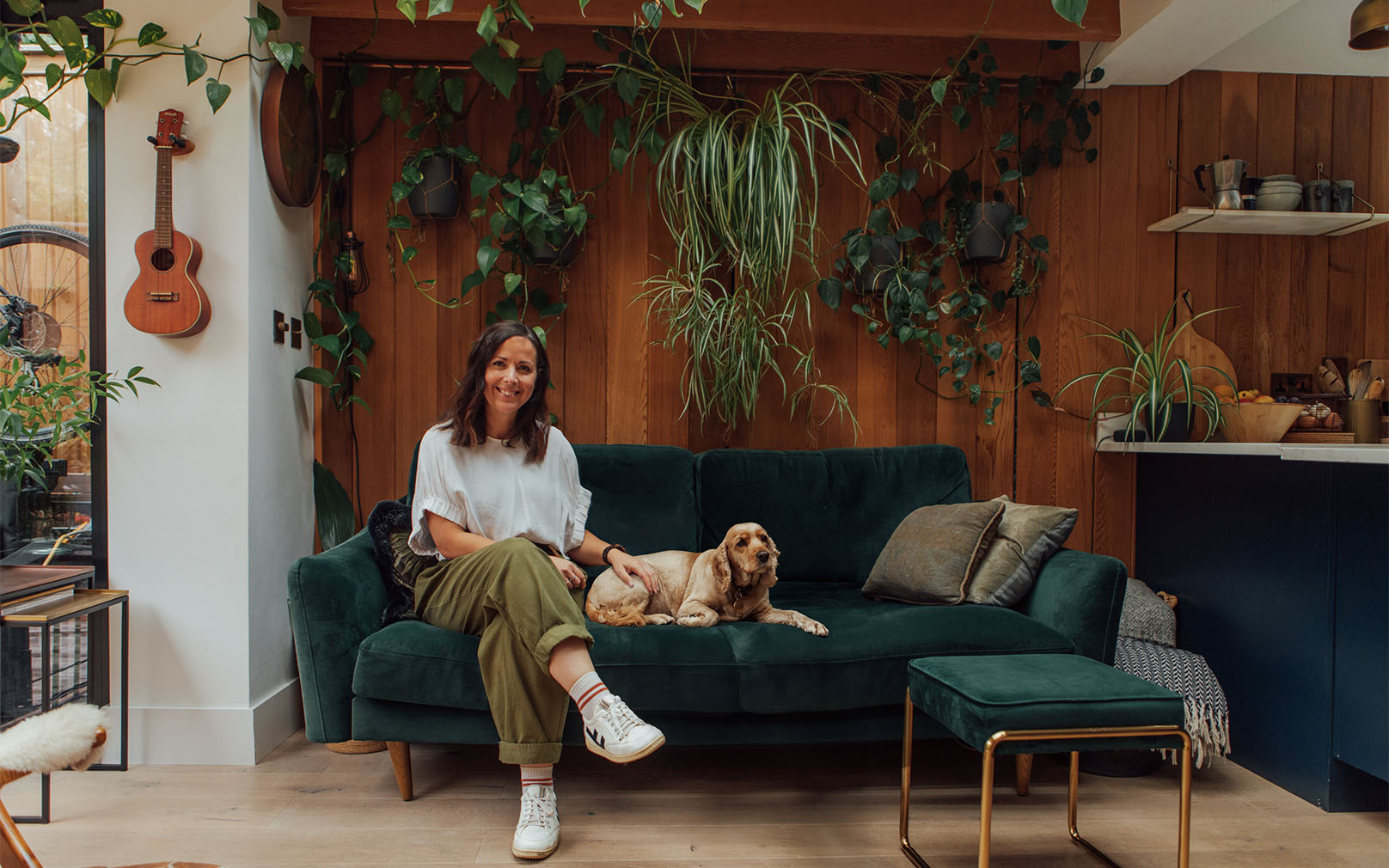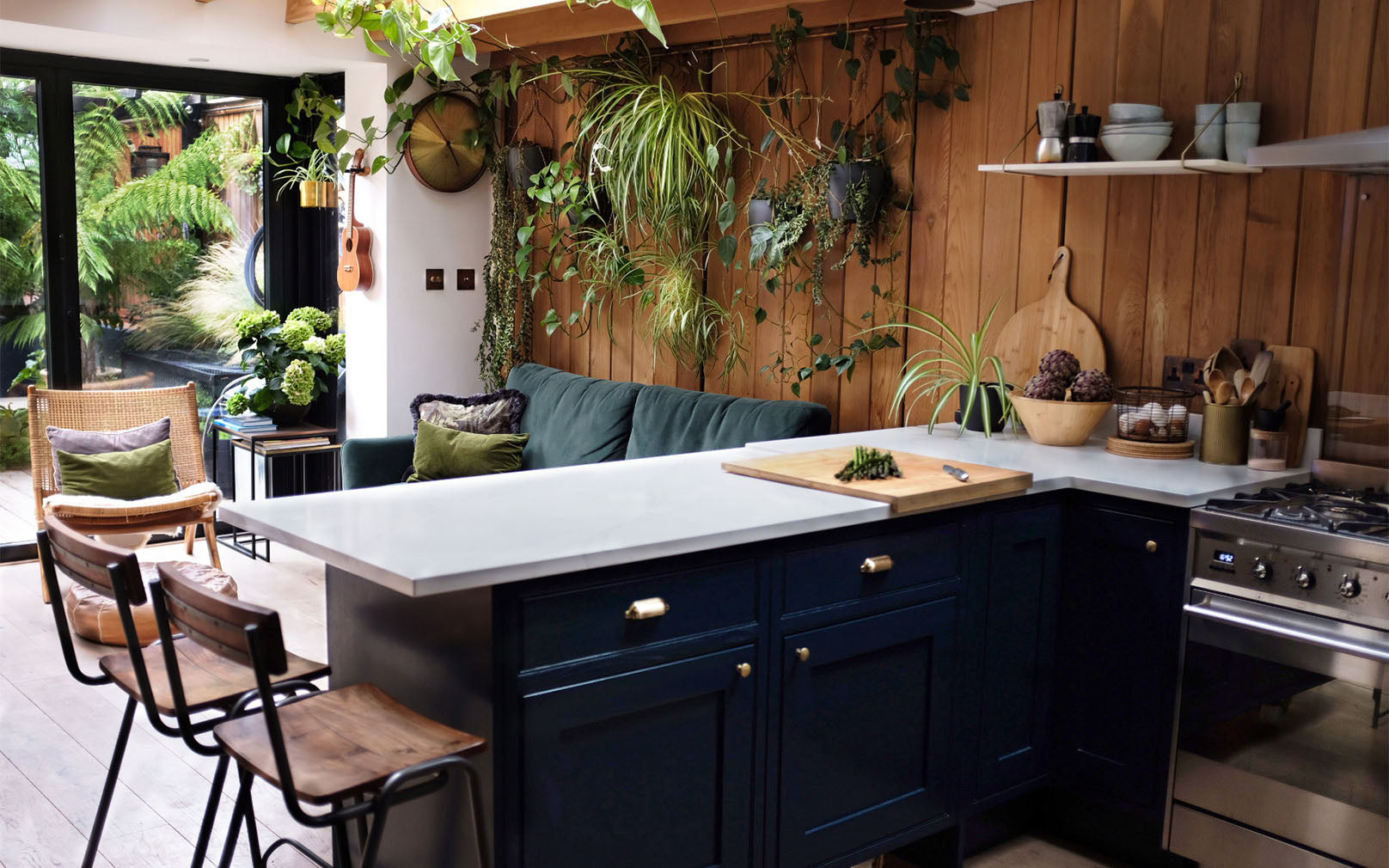Ten with Tom: Marianna Popejoy

With her first book, At Home with Nature, hot off the press, Marianna Popejoy is becoming an expert in biophilic design. Unsurprisingly, we love our copy here at Tom Raffield HQ, flicking through the pages when we are in need of organic influence, or plant tips. We spoke to Marianna about all things green – from sustainability, to how to choose the perfect plant…
TR: Congratulations on your first book, At Home with Nature! Can you share a bit about it?
MP: “Thank you so much. Honestly, I still can’t quite believe it’s finally out there in the world. It’s been a long time in the making. My book ‘At Home with Nature’, is about building strong connections to nature within our homes that support our physical health and mental well-being. I came up with the idea of writing the book during lockdown, when I realised that the biophilic design principles we had designed into our home made us feel held and protected during those turbulent times as opposed to confined or trapped. I wanted to write a book giving people practical and achievable ways to connect their own spaces to nature and create an environment that nurtures and supports them from the minute they walk through the door. The aim was for the book to be informative and packed full of useful advice, as well as stop you in your tracks, facts, and stats, while also being a beautiful and tactile coffee table book.”

TR: We love your enthusiasm for biophilic design – how did the passion start?
MP: “I stumbled across the word ‘biophilia’ about eight years ago, in a somewhat haphazard way, after being asked by various journalists if they could feature our home as they felt that it was a great example of biophilic design. The more I learned about the concept, the more I recognised how many of the core principles of biophilia we had incorporated into the design of our home without even realising it. Proof that the desire to connect the spaces we live in to nature really is an intrinsic part of being human. Although I may have stumbled upon the word ‘biophilia’ by accident, going out into nature is where I go to find solace and calm when life starts to get a bit too hectic, so it was always our intention, in every stage of planning the design of our home, to have that clear connection to nature and the natural environment. And so, this very happy accident has led me into a career where I get to design people’s indoor and outdoor spaces in line with the very same biophilic principles that I’ve always been so subconsciously drawn to.”
TR: What three things could you not live without?
MP: “Oh, that’s a great question. I’m going to go down the interiors route here as otherwise I will run the risk of going off on a tangent that involves giant Wotsits and face serum. I’ll start with houseplants, because, well, how could I not? Houseplants can lift even the most drab of spaces. They literally breathe life into a room. I once managed to help a family member add ten thousand pounds more onto the price of their flat by lending them a few of my houseplants to style the rooms with - that is that magic of the humble houseplant. Number two would have to be well designed storage. Organising our homes isn’t just about making us more efficient and having a place to store the hundreds of Tupperware lids that no longer have a significant other. It is also the foundation for creating a space that inspires and stimulates us in a way that is beneficial to our functionality and mental wellbeing. Good storage design has been known to save marriages. Fact. And number three is without-a-doubt, secondary lighting, because what sort of psychopath puts the big light on these days?”


TR: Can you share some tips on how to find the perfect plant?
MP: “The key to finding the perfect houseplant is exactly the same method that I use if I'm designing an exterior planting scheme. It’s all about location, location, location. Avoid turning up at the plant shop or garden center on a whim…this is not a time to embrace your spontaneous side, that is unless you want to throw good money into the composting bin.
First of all, figure out if the location for the plant is full sun (more than six hours of direct sun per day, partial shade (three to six hours of sun) or full shade (less than four hours of sun). Once you know the lighting conditions then you can pick the perfect plants for that spot. I give some examples of healing houseplants in the book, and I even select some resilient, bulletproof plants for the self-confessed green reapers amongst us but generally speaking, we tend to be drawn to plants with large green leaves. The curvier the better. Cactuses might be cool to look at but anything with spikes or jagged, pointy leaves can subconsciously remind us of danger in the natural world and won’t conjure up feelings of that safe and peaceful sanctuary that we’re trying to replicate in our homes.”

TR: How is sustainability important to you?
MP: “Sustainability is incredibly important to me. It is the cornerstone of biophilic design because it ensures a long-lasting connection between humans and nature. Using reclaimed, natural materials, furnishings and decoration that is free from VOC’s, and incorporating native planting that supports biodiversity and minimises environmental impact creates a harmonious relationship where the built environment supports, rather than burdens, the natural world. This focus on sustainability fosters a sense of wellbeing for the inhabitants, who will inevitably feel safer and more content in the knowledge that they're not causing unnecessary harm to our planet.”
TR: What is your favourite Tom Raffield design?
MP: “That is a really tough one to answer. I’m going to go with one of the planters because they were the first products that I discovered, making me aware of Tom Raffield's work. I absolutely adore the Merryn Floor Standing Planters - they are a work of art in themselves. The bends and twists in the oak are very reminiscent of reeds and leaves found in nature and, quite honestly, even without a plant displayed in them, they are a thing of beauty that I could happily sit and gaze at while taking a much needed visual respite from a mundane task. It would certainly make the completion of the annual tax return more enjoyable.”


TR: Why is it beneficial to bring nature's colour palette into homes?
MP: “Picture this: you’re floating on a yoga mat following a restorative session at a fancy retreat and the instructor asks you in their soothing voice to transport yourself to a place where you feel truly happy. A place where you feel completely calm and relaxed. Most people are probably going to imagine themselves lying on an empty beach, next to the gentle lapping of crystal blue waves. They may even think of themselves looking out over a kaleidoscopic sunset or bathing in the soft, dappled light of a lush green forest. Asking yourself this question before committing to a colour scheme for your home, can help you to narrow down the colours in our environment that make you feel the most content or inspired. In my book “At Home with Nature’ I take you through the various nature inspired hues and explore how their familiarity to our natural environment can create a response within us that directly affects the way that we feel when we use them in our homes and workspaces.”
TR: We love hearing about other people’s interior style, what makes your house a home?
MP: “I think a collected home is a home with soul. Just a few pieces dotted around a space that tell a story or trigger a memory will make the space feel more personal to you and your family. Not only should your home feel connected to its environment, but it should also tell your family's story, whether it's through an item from your travels or a gentle nod to your heritage. It is what will make your home feel truly unique to you so that you feel a deeper connection to it.”

TR: Where do you find creative inspiration?
MP: “Since moving from London to Cornwall, I can’t help but be inspired by the colours and the textures of the stunning Cornish coastline. The flora and fauna are constantly changing with the seasons, offering up new harmonious colour combinations that I may not have considered before and if I’m ever feeling like I’m in a creative funk, just taking a moment away from my computer to get some sea air with my dog always gives me the boost that I need.”
TR: What’s the best thing about surrounding yourself and working with nature daily?
MP: “The most rewarding aspect of working with nature is the constant sense of connection and growth that I experience. This hands-on relationship with the natural world builds a deeper appreciation for its beauty and complexity. Spending so much of my time out in nature and taking inspiration from the natural environment in order to cultivate new ideas is essential for building on those restorative connections within the home. The joy in seeing the impact that my work can have on my clients quality of life is hugely rewarding and a privilege that I will never take for granted. I feel incredibly lucky to have turned my passion into a career.”

Posted: 18.04.24